 W
WThe company ASTELCO Systems is a manufacturer of telescopes, telescope control systems, domes/enclosures and related technology for professional astronomical research or public use. ASTELCO is located in Martinsried near Munich and was founded in 2004.
Boller and Chivens was an American manufacturer of high-quality telescopes and spectrographs headquartered in South Pasadena, California.
 W
WDr. John Alfred Brashear was an American astronomer and instrument builder.
 W
WRobert-Aglaé Cauchoix was a French optician and instrument maker, whose lenses played a part in the race of the great refractor telescopes in the first half of the 19th century.
 W
WAlvan Clark & Sons was an American maker of optics that became famous for crafting lenses for some of the largest refracting telescopes of the 19th and early 20th centuries. Founded in 1846 in Cambridgeport, Massachusetts, by Alvan Clark, and his sons George Bassett Clark (1827–1891) and Alvan Graham Clark (1832–1897). Five times, the firm built the largest refracting telescopes in the world. The Clark firm gained "worldwide fame and distribution", wrote one author on astronomy in 1899.
 W
WAlvan Clark, born in Ashfield, Massachusetts, the descendant of a Cape Cod whaling family of English ancestry, was an American astronomer and telescope maker. He started as a portrait painter and engraver (c.1830s-1850s), and at the age of 40 became involved in telescope making. Using glass blanks made by Chance Brothers of Birmingham and Feil-Mantois of Paris, his firm Alvan Clark & Sons ground lenses for refracting telescopes, including the largest in the world at the time: the 18.5-inch (47 cm) at Dearborn Observatory at the Old University of Chicago, the two 26-inch (66 cm) telescopes at the United States Naval Observatory and McCormick Observatory, the 30-inch (76 cm) at Pulkovo Observatory, the 36-inch (91 cm) telescope at Lick Observatory and later the 40-inch (100 cm) at Yerkes Observatory, which remains the largest successful refracting telescope in the world. One of Clark's sons, Alvan Graham Clark, discovered the dim companion of Sirius. His other son was George Bassett Clark; both sons were partners in the firm.
 W
WThomas Cooke was a British scientific instrument maker based in York. He founded T. Cooke & Sons, the scientific instrument company.
 W
WDFM Engineering is an American telescope and optics manufacturer founded in 1979 by Frank Melsheimer in Longmont, Colorado. DFM makes medium size Cassegrain telescopes and their associated systems including telescope optics, control systems, and mounts. A range of pre-designed telescopes are made, as are various custom installations. DFM produces its classical Cassegrain design in various apertures from 16 inches (0.4 m) to 50 inches (1.3 m) and larger. The base DFM 16-inch (40 cm) telescope system cost roughly 94 thousand USD in 2005.
 W
WThe Galileoscope is a small mass-produced refractor telescope, designed with the intention of increasing public interest in astronomy and science. It was developed for the International Year of Astronomy 2009. The small telescope has an aperture of 50 mm and a relatively long focal length of 500 mm, for a focal ratio of f/10.
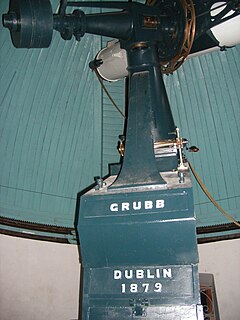 W
WSir Howard Grubb, Parsons and Co. Ltd. was a telescope manufacturer, more commonly known as Grubb Parsons. It was based in Newcastle upon Tyne, in England.
 W
WSir Howard Grubb was an optical designer from Dublin, Ireland. He was head of a family firm that made large optical telescopes, telescope drive controls, and other optical instruments. He is also noted for his work to perfect the periscope and inventing the reflector sight.
 W
WThomas Grubb was an Irish optician and founder of the Grubb Telescope Company.
 W
WGeorg Merz was a Bavarian optician and manufacturer of astronomical telescopes and other optical instruments.
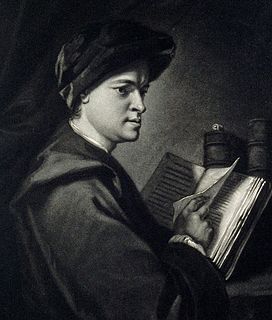 W
WJohn Mudge was a British physician and amateur creator of telescope mirrors. He won the Copley Medal in 1777 for a paper on reflecting telescopes.
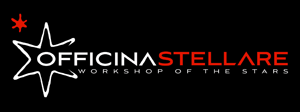 W
WOfficina Stellare is an international engineering company, leader in the design and manufacture of complex opto-mechanical and aerospace instrumentation for ground based and space based applications.
 W
WOptical Mechanics, Inc. or OMI is a high-end American telescope and optics instrument manufacturer. OMI was founded in 2002 and produces observatory telescopes, Lidar telescopes, optical tube assemblies, telescope mirrors and reflective coatings for mirrors. OMI mirrors are used by other telescope makers such as Obsession Telescopes. Also taking on custom projects, they produced the 48-inch Dob, a 48.875-inch-diameter (1,241.4 mm) aperture, f/4, Dobsonian telescope called "Barbarella" and featured in Astronomy Technology Today magazine. OMI is located in the US state of Iowa. OMI procured the assets of the former optics company Torus Technologies. OMI has an optics shop where it does work on telescopes.
 W
WRC Optical Systems was a high-end American telescope and optics manufacturer that specialized in Ritchey-Chrétien telescopes with hyperbolic mirrors. RC also made related mounts and systems for the telescopes, with a focus on open and closed carbon fiber trusses for low expansion. The Ritchey-Chrétien uses two mirrors and no refractors, which reduces light loss and its optical characteristics make it popular for astrophotography. RC Optical Systems was started 1998 and was located in Flagstaff, Arizona. Telescopes and systems were sold commercially to individuals, institutions, and governments. The smallest RCOS telescope, the 12.5 inch F/9 Ritchey-Chrétien had a base price of just over twenty thousand US dollars in 2009, with large and/or custom models costing considerably more.
 W
WGeorge Willis Ritchey was an American optician and telescope maker and astronomer born at Tuppers Plains, Ohio.
 W
WBernhard Woldemar Schmidt was a Baltic German optician. In 1930 he invented the Schmidt telescope which corrected for the optical errors of spherical aberration, coma, and astigmatism, making possible for the first time the construction of very large, wide-angled reflective cameras of short exposure time for astronomical research.
Anton Maria Schyrleus of Rheita (1604–1660) was an astronomer and optician. He developed several inverting and erecting eyepieces, and was the maker of Kepler’s telescope. "Things appear more alive with the binocular telescope," he wrote, "doubly as exact so to speak, as well as large and bright. His binocular telescope is the precursor to our binoculars. .
 W
WSecretan was a company based in Paris, France that manufactured telescopes and other scientific instruments.
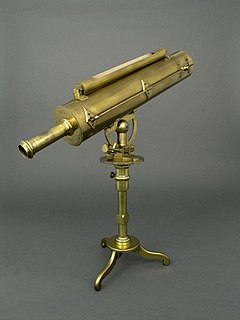 W
WJames Short FRS was a Scottish mathematician and manufacturer of optical instruments, principally telescopes. During his 35-year career as a telescope-maker he produced approximately 1,360 scientific instruments.
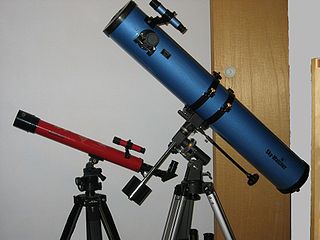 W
WSky-Watcher is a commercial distribution company established in 1999 by the Synta Technology Corporation of Taiwan that markets telescopes and astronomical equipment, like mounts and eyepieces, aimed at the amateur astronomical market. The products are manufactured at Synta Taiwan's Suzhou Synta Optical Technology Co., Ltd. in Suzhou (Jiangsu), China. The brand is distributed in Canada and Europe and, in the late 2000s, extended to the USA market.
 W
WSwarovski Optik is a division of the Swarovski group of companies, manufacturing optical instruments. Its headquarters are located in Absam, Tyrol, Austria.
W. Watson and Son was an optical instrument maker. In 1837, the William Watson business was established in London for the manufacture of optical instruments. By the 1840s, the company moved into lanterns, slides and associated equipment. In 1868, the name was changed to W. Watson & Son and by this time were located at 313 High Holborn, London. In the 1870s, the company added photographic equipment and became known as a leading manufacturer of the Highest Class Photographic Instruments and Apparatus in England. Into the 1940s, the company remained at 313 High Holborn, London, England.
 W
WThe Warner & Swasey Company was an American manufacturer of machine tools, instruments, and special machinery. It operated as an independent business firm, based in Cleveland, from its founding in 1880 until its acquisition in 1980. It was founded as a partnership in 1880 by Worcester Reed Warner (1846–1929) and Ambrose Swasey (1846–1937). The company was best known for two general types of products: astronomical telescopes and turret lathes. It also did a large amount of instrument work, such as equipment for astronomical observatories and military instruments The themes that united these various lines of business were the crafts of toolmaking and instrument-making, which have often overlapped technologically. In the decades after World War II, it also entered the heavy equipment industry with its acquisition of the Gradall brand.